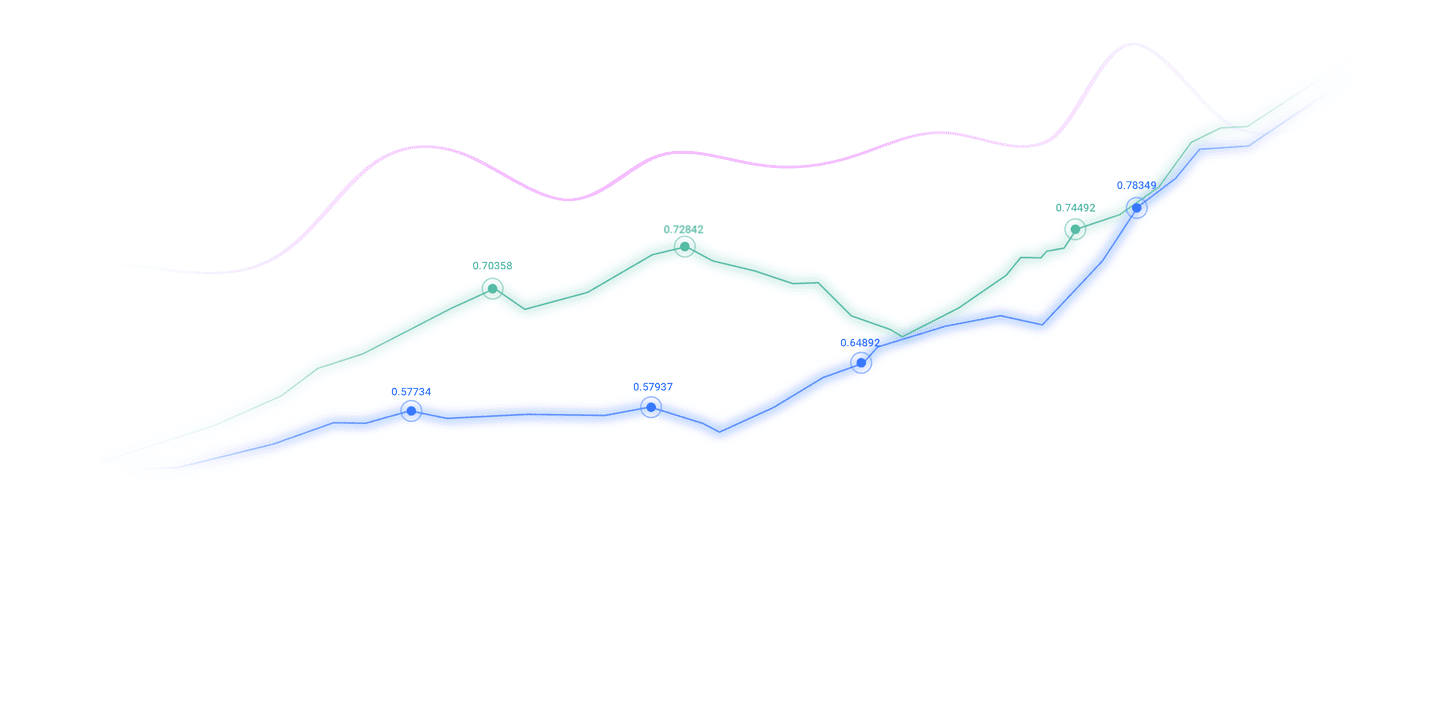Trusted by over 15 Million Traders
The Most Awarded Broker
for a Reason
CATEGORIES
News
- Copper price rise is suspended, the market is waiting for more value opportuniti
- The dollar is hesitant before key U.S. data is released, Puter meeting is coming
- Gold retreats again, life and death, long and short look at the European session
- The latest trend analysis of the US dollar index, yen, euro, pound, Australian d
- A collection of positive and negative news that affects the foreign exchange mar
market news
The non-agricultural outpost battle begins! The US dollar index "bridges through" the 98.89 highland, and the short-selling retreat route was encircled by MACD/RSI
Wonderful Introduction:
If the sea loses the rolling waves, it will lose its majesty; if the desert loses the dancing of flying sand, it will lose its magnificence; if life loses its real journey, it will lose its meaning.
Hello everyone, today XM Foreign Exchange will bring you "[XM Official Website]: The non-agricultural outpost battle begins! The US dollar index "bridges through" the 98.89 highland, and the short retreat route is surrounded and suppressed by MACD/RSI." Hope it will be helpful to you! The original content is as follows:
XM Forex APP News-On Tuesday (July 29), the US dollar index (DXY) continued its recent strong gains, with the latest quote hovering around 98.89, consolidating a 1% single-day gain on Monday - the strongest single-day performance since May. Driven by the conclusion of the U.S.-EU trade agreement framework and market optimistic expectations for U.S. economic data and Fed policy, the rebound of the U.S. dollar index began after hitting a three-year low of 96.38 in early July and was gradually supported by multiple positive factors. First, the market has eased the risk aversion sentiment caused by Trump's tariff remarks. The framework of the trade agreement announced by the United States and Europe on Sunday is particularly critical, which reduces the high tariff risks previously worried about by the market and wins significant economic benefits for the United States. According to industry news, the agreement stipulates that the United States imposes a benchmark tariff of 15% on most EU imported goods, which is lower than 30% discussed previously, but higher than the original 10% level; at the same time, strategic materials such as aviation parts, semiconductors, medicines and agricultural products have been exempted from tariffs, ensuring the stability of the supply chain. The EU has promised to purchase US$750 billion in U.S. energy (mainly liquefied natural gas) in the next three years and additional US$600 billion in investment in the United States through private enterprises. This agreement was interpreted by the market as enhancing the strategic advantages of the US economy and the US dollar. In addition, trade agreements between the United States and other economies such as Japan have further boosted market confidence. For example, the US-Japan agreement reduces automobile tariffs from 27.5% to 15%, and introduces a $550 billion investment plan to cover key areas such as semiconductors and energy. The agreements eased market concerns about the August 1 tariff deadline and reduced pressure on the dollar from global trade tensions. At the same time, strongStrong U.S. economic data further weakened market expectations for the Fed's interest rate cut from July 29-30 meeting. According to the CMEFedWatch tool, the market believes that the possibility of a rate cut this week is almost zero, while the probability of a 25 basis point cut in September is about 60%. This reflects investors' confidence in the resilience of the U.S. economy, especially as inflationary pressures persist. The upcoming U.S. economic data on Tuesday has attracted much attention, including the home price index, consumer confidence index and JOLTS job opening report. The market expects the consumer confidence index to rise to 96.0 in June from 93.0 in June, a two-month high; while the JOLTS job opening is expected to drop to 7.55 million from 7.76 million in May. These data will provide the market with the latest clues to the U.S. economy and labor market, especially the importance of JOLTS data as a forward-looking indicator of Friday's non-farm employment report. If the data performance meets or exceeds expectations, it may further consolidate the strong position of the US dollar; but if the job vacancy unexpectedly falls below 7 million, it may trigger market concerns about a cooling of the labor market and increase the expectation of a rate cut in September, thus posing short-term pressure on the US dollar. It is worth noting that the U.S. Treasury Department recently announced a net new market debt plan of $1.6 trillion in the second half of 2025 (1.007 trillion in the third quarter and 590 billion in the fourth quarter), of which about $500 billion was used to rebuild the Treasury General Account (TGA). This large-scale bond issuance plan puts pressure on the bond market, with the 30-year treasury yield approaching 4.96%, and the 10-year and 2-year yields reaching 4.41% and close to 4%, respectively. High financing costs may challenge the U.S. fiscal outlook, and the market is beginning to focus on its potential crowding-out effect on private investment. Nevertheless, the attractiveness of the US dollar as a safe-haven asset remains solid in the current environment. From a technical perspective, the trend of the US dollar index (DXY) shows a steady bullish structure. In early July, the index rebounded from its three-year low of 96.38, successfully breaking through the upper rail resistance of the previously formed decline wedge pattern, laying the foundation for the rebound. The current quote is 98.89, above the 50-day exponential moving average (EMA, 98.2994), which has become the instant support level, with the 97.80-98.00 area below providing further support. Looking upward, the June 23 high of 99.42 is the next key resistance level, followed by the 100-day EMA (99.9039). If the index can firmly maintain above 98.50, it will further strengthen the bullish structure and point to higher resistance areas. Momentum indicators support bullish outlook. The relative strength indicator (RSI) is currently around 59, indicating that buying momentum has increased and has not yet entered the overbought area (above 70), which implies that there is still room for upward. The moving average convergence-divergence index (MACD) also supports bullishness. Both the MACD line and the signal line are up, and the bar chart continues to expand in the positive area, reflecting that the bulls are accumulating. These technical signals indicate that the US dollar index is expected to continue to rise in the short term, but we need to be wary of the pressure at key resistance levels and the potentialCallback risk. Traders' discussions on the US dollar index continue to heat up. Some users believe that the conclusion of the US-EU agreement marks a stabilization of the global trade environment and the further enhancement of the attractiveness of the US dollar as a safe-haven asset. Some professional accounts point out that JOLTS data and the Fed meeting will be key catalysts for the week, and if labor market data is weak, it may temporarily weaken the dollar's rally, but overall bullish sentiment will still dominate. However, some users have expressed concern about the high U.S. Treasury yields and large-scale bond issuance plans, believing that long-term fiscal pressure may limit the rise of the US dollar. These discussions reflect the market’s trade-offs on short-term positives and long-term risks. Future trends look forward to the future, and the trend of the US dollar index will be directly affected by Tuesday's economic data and Wednesday's Federal Reserve policy meeting in the short term. If consumer confidence and JOLTS data perform soundly, market confidence in the resilience of the US economy will be further consolidated, and the US dollar may continue to challenge the 99.42 or even the 100-day EMA (99.9039). From a technical perspective, the support role of the 50-day EMA and the bullish signals of MACD and RSI provide momentum for the US dollar, but we need to pay attention to the difficulty of breaking through the resistance level. If the data is unexpectedly weak, especially the JOLTS job openings are significantly lower than expected, the market may reprice the probability of a rate cut in September, and the US dollar may face pressure to pull back, and the 97.80-98.00 area will become a key test. In the medium term, the strength of the US dollar is still supported by the global trade environment and the fundamentals of the US economy, but high Treasury bond yields and fiscal pressures may gradually appear. The options market shows that there is currently a lack of strong unilateral breakthrough expectations, and the US dollar index may maintain high fluctuations in the range of 98.50-99.50 unless new macro catalysts appear. Traders need to pay close attention to the Fed's policy signals and subsequent non-farm employment data to judge the sustainability of the US dollar's rise.
The above content is all about "[XM official website]: The non-agricultural outpost battle begins! The US dollar index "bridges through" the 98.89 highland, and the short retreat route is surrounded and suppressed by MACD/RSI". It is carefully www.xmserving.compiled and edited by the XM Foreign Exchange editor. I hope it will be helpful to your trading! Thanks for the support!
After doing something, there will always be experience and lessons. In order to facilitate future work, we must analyze, study, summarize and concentrate the experience and lessons of previous work, and raise it to the theoretical level to understand it.
Disclaimers: XM Group only provides execution services and access permissions for online trading platforms, and allows individuals to view and/or use the website or the content provided on the website, but has no intention of making any changes or extensions, nor will it change or extend its services and access permissions. All access and usage permissions will be subject to the following terms and conditions: (i) Terms and conditions; (ii) Risk warning; And (iii) a complete disclaimer. Please note that all information provided on the website is for general informational purposes only. In addition, the content of all XM online trading platforms does not constitute, and cannot be used for any unauthorized financial market trading invitations and/or invitations. Financial market transactions pose significant risks to your investment capital.
All materials published on online trading platforms are only intended for educational/informational purposes and do not include or should be considered for financial, investment tax, or trading related consulting and advice, or transaction price records, or any financial product or non invitation related trading offers or invitations.
All content provided by XM and third-party suppliers on this website, including opinions, news, research, analysis, prices, other information, and third-party website links, remains unchanged and is provided as general market commentary rather than investment advice. All materials published on online trading platforms are only for educational/informational purposes and do not include or should be considered as applicable to financial, investment tax, or trading related advice and recommendations, or transaction price records, or any financial product or non invitation related financial offers or invitations. Please ensure that you have read and fully understood the information on XM's non independent investment research tips and risk warnings. For more details, please click here


































































































